Whole-Body Low-Dose Multidetector-Row CT in Multiple Myeloma: Guidance in Performing, Observing, and Interpreting the Imaging Findings
- PMID: 34947851
- PMCID: PMC8707516
- DOI: 10.3390/life11121320
Whole-Body Low-Dose Multidetector-Row CT in Multiple Myeloma: Guidance in Performing, Observing, and Interpreting the Imaging Findings
Abstract
Multiple myeloma is a hematological malignancy of plasma cells usually detected due to various bone abnormalities on imaging and rare extraosseous abnormalities. The traditional approach for disease detection was based on plain radiographs, showing typical lytic lesions. Still, this technique has many limitations in terms of diagnosis and assessment of response to treatment. The new approach to assess osteolytic lesions in patients newly diagnosed with multiple myeloma is based on total-body low-dose CT. The purpose of this paper is to suggest a guide for radiologists in performing and evaluating a total-body low-dose CT in patients with multiple myeloma, both newly-diagnosed and in follow-up (pre and post treatment).
Keywords: low-dose CT; multiple myeloma; whole-body CT.
Conflict of interest statement
The authors declare no conflict of interest.
Figures
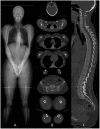
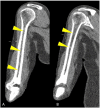
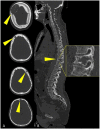

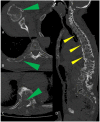
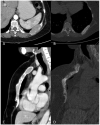
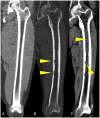
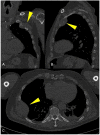
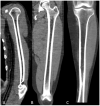
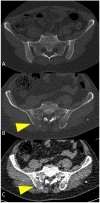
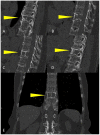
References
-
- Hillengass J., Usmani S., Rajkumar S.V., Durie B.G.M., Mateos M.V., Lonial S., Joao C., Anderson K.C., García-Sanz R., Riva E., et al. International myeloma working group consensus recommendations on imaging in monoclonal plasma cell disorders. Lancet Oncol. 2019;20:e302–e312. doi: 10.1016/S1470-2045(19)30309-2. - DOI - PubMed
-
- Rajkumar S.V., Dimopoulos M.A., Palumbo A., Blade J., Merlini G., Mateos M.V., Kumar S., Hillengass J., Kastritis E., Richardson P., et al. International Myeloma Working Group updated criteria for the diagnosis of multiple myeloma. Lancet Oncol. 2014;15:e538–e548. doi: 10.1016/S1470-2045(14)70442-5. - DOI - PubMed
Publication types
LinkOut - more resources
Full Text Sources

